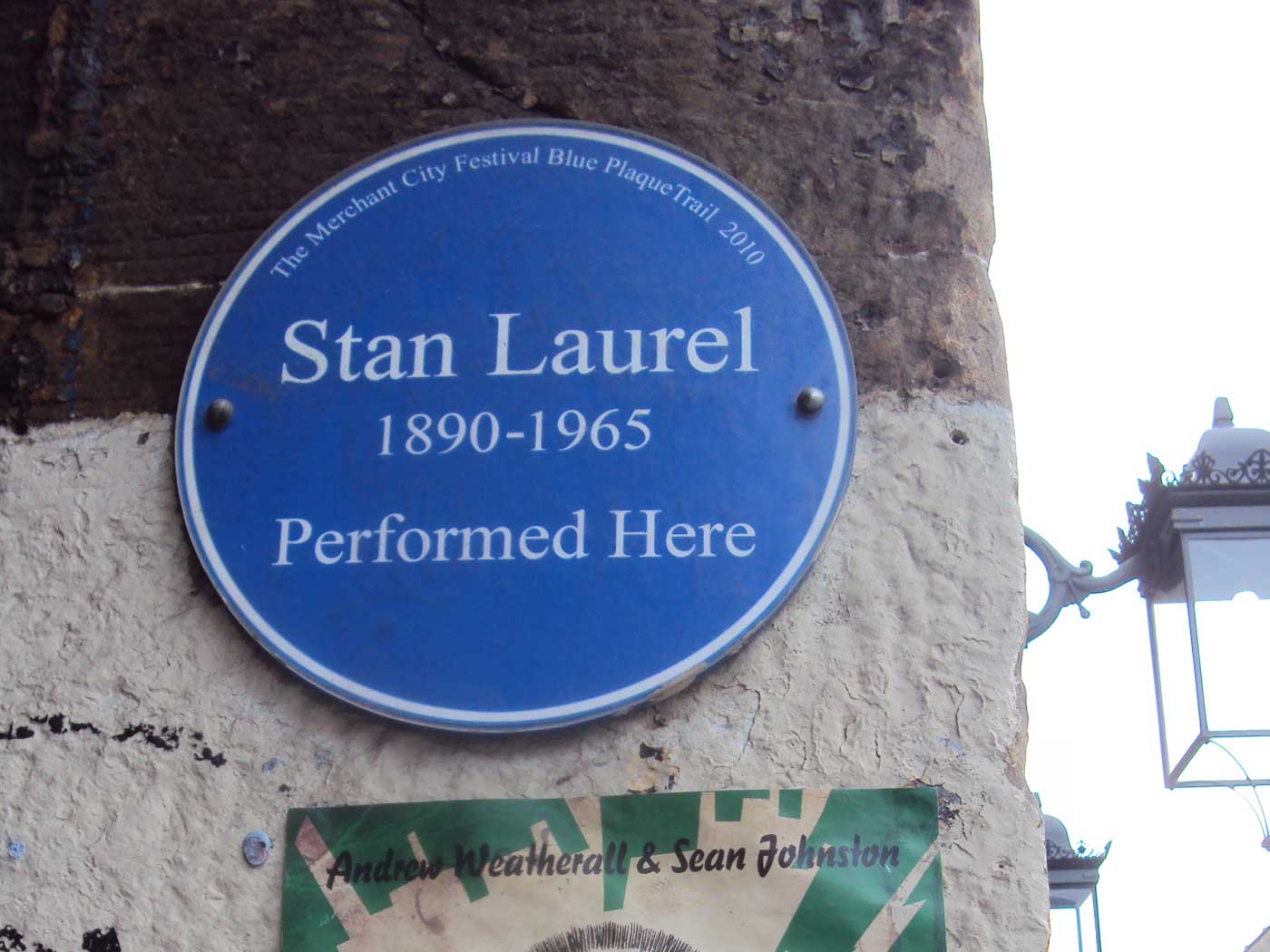Glasgow’s Britannia Panopticon: the world’s oldest surviving music hall.

Tucked away in a nondescript lane off Argyle Street in Glasgow is the entrance to the world’s oldest surviving music hall, the Britannia Panopticon. It’s one of our favourite stops on our Merchant City Music Past and Present tour, and it never fails to astonish our guests —including Glaswegians.
Our guide Fiona onstage at The Panopticon with guests
Run by the indomitable Judith Bowers and her wonderful team of tireless volunteers, a charitable trust has been established to help preserve the Britannia Panopticon for future generations to enjoy as a living museum of music hall and Victorian/ Edwardian popular entertainments.

Meredith Joy Robinson (staff), Peter Crilly (Chief Volunteer Guide), John Chisholm (Volunteers Guide) Kenny Bray (Volunteer handyman) Stacey Welsh (Staff) Judith Bowers (Project Director)
We’re running an abridged extract from Judith’s book Glasgow’s Lost Theatre : The Story of The Britannia Music Hall. You can buy copies at all good bookshops or at the Panopticon shop. We’d like to thank Judith and Birlinn Publishers.

Here Judith describes how she began to suspect what was hidden above an old shop on Argyle Street.
I can remember looking at it for the first time from across the street. My attention was drawn by its colour, pale blue. It stood out like a sore thumb amidst its unpainted neighbours. The paint had begun to flake off in bits, revealing buff-coloured sandstone beneath, and buddleia bushes were pushing their way out through the upper windows and guttering. The paint and neglect did not detract from the fact that this was a remarkable piece of architecture. ‘Italianate’ in style, the building had three floors of arched windows.

The windows from the first floor up were empty, dark and lifeless. Like many buildings in the East End of the city, only the ground floor was occupied and the upper storeys were either used for storage or lay vacant. The windows on the first floor had been painted white and emblazoned with the words ‘Leather Club’. There were leather jackets, coats and trousers in the window display of the shop below. I went in.
Pushing through the leather forest, I found my way to a staircase, which led up to the men’s department on the first floor. At first, it seemed to be a repeat of the floor below and my heart sank, but only for a moment; my eyes were soon drawn to the ceiling. Although not instantly remarkable (there was no cornicing or ceiling rose), it bizarrely sloped up a few feet at either side of the expansive room. What was the reason for this strange arrangement? It certainly didn’t seem to have been an intentional design feature – nothing of this shop’s interior, in fact, appeared to be by design. I wandered amongst the clothes and garish promotional posters, scanning the room looking for evidence of its Victorian origins. Hidden amongst the racks of imported leather jackets were big, cast-iron columns which appeared mismatched: on one side of the room, they were capped with ornate moulded detailing, partially filled in with thick black gloss paint, whilst on the other side they were plain. The columns were placed around the edges of the lowered ceiling…It now seemed obvious that the ceiling was not original. I asked one of the shop assistants if she knew what the building had been used for previously. She looked at me with a glazed expression and replied in a thoroughly bored tone, ‘A shop.’I left a note for the manager, asking whether it would be possible for me to see the upper floors of the building, and then went back to work.
The shop manager never did get in touch and I gradually forgot about the building. It wasn’t until 1993 that I once again found myself standing outside it, wondering what secrets lay hidden there. In fact, I had nipped into the lane at the east side of the building to light a cigarette. As I stood struggling with my match against the wind, I looked up and saw on the wall a plaque with a picture of the blue building on it. The drawing showed the façade, but half had been removed to reveal a theatre on the first and second floors. It was a bit like peeking into a dolls’ house.
Above the picture was written ‘Britannia Music Hall 1857-1938’ and beneath was a brief history of the building. From this plaque I learned that Stan Laurel had made his debut there and that a man called A.E. Pickard had changed the name of the building to ‘Panopticon’ when he had taken over as manager in 1906.

This was obviously a building of historical as well as architectural interest. The first-floor men’s department of the Leather Club had once been the stalls of the Britannia Music Hall. The question was, did any of it still survive? I decided I needed to find out more about it.
If you’d like to read more of Glasgow’s Lost Theatre : The Story of The Britannia Music Hall by Judith Bowers you can buy copies at all good bookshops or at the Panopticon shop.
To find out more about how to help or for more information about events, exhibitions and shows please contact [email protected]
For enquiries about how to join the Friends of Britannia Panopticon, how to volunteer and volunteer opportunities, how to donate or sponsor please contact [email protected] alternatively write to: Britannia Panopticon Music Hall Trust, 113-117 Trongate, Glasgow, Scotland, G1 5HD
